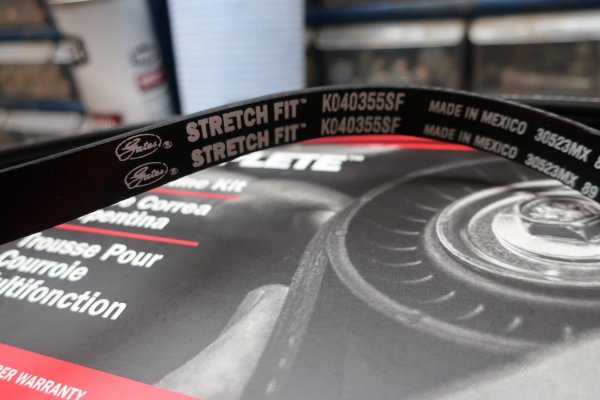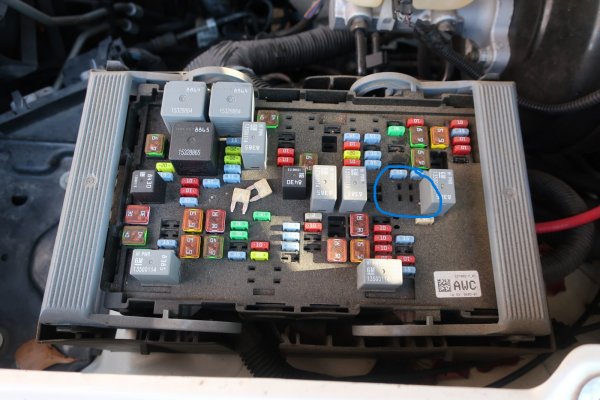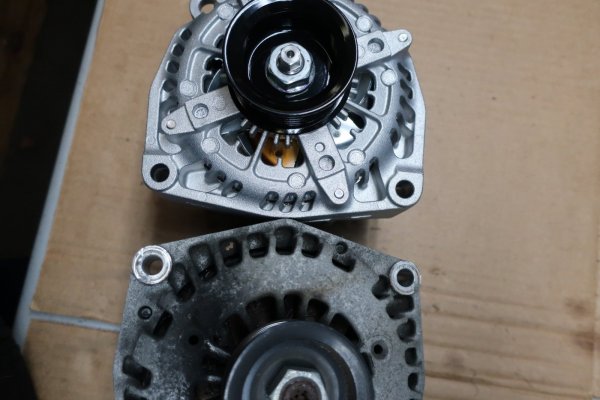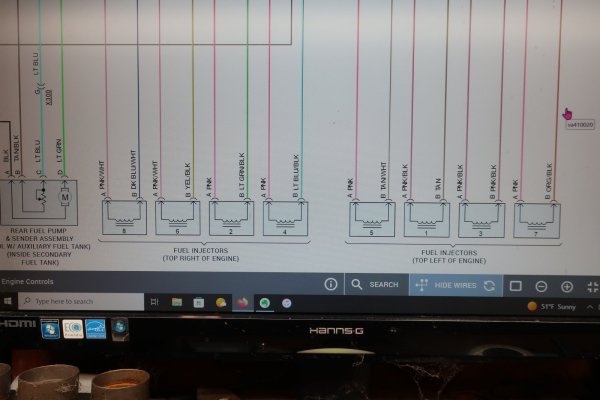I continued making progress over the past couple of days. Sort of...
I wrapped up underneath the Escalade by installing the new stretch belt for the AC compressor. New belt went on OK, though of course I got it misaligned one spline on the AC compressor. Had to rotate the crank back and forth a bit to walk the belt back on properly. Like last time, I used the 'secure the belt to the crankshaft pulley with a large zip-tie' trick to install the stretch belt. Worked much better than the installation tool I bought.
View attachment 417046
New Gates AC compressor stretch belt. I went with Gates vs ACDelco this time. Last time, the ACDelco kit was full of Gates parts...
 View attachment 417047
View attachment 417047
New stretch belt installed. As mentioned, I had to rotate the crank pulley back and forth a bit to walk the belt back into alignment. I was going to rotate the crank a full revolution to seat the belt. Just because. However....I noticed a couple of funny sounds. Guess who forgot there were rags stuffed in the intake ports and the ports covered in tape...

I looked later and noted none of the tape was blown in on any ports. I will be gentle when I remove the rags to ensure none are caught and tear later.
Then, again I tried to remove the rear heater core hose elbow quick disconnects. And again failed. I tried different tools this time. I sprayed aerosol silicone into the top of each quick disconnect. I squeezed until my finger and thumb hurt. To no avail. Tuesday night/Wednesday morning was very bad at work, so I forgot to bring home my long 90 degree needle nosed pliers. In desperation, I tried a couple of fuel/AC line disconnect tools to get a stronger grip on the release tabs. And failed.
I did attempt to protect myself from drowning in coolant. Service manual calls for draining the cooling system. Well...I had just refilled it. And, the rear heater core hose connections are high up on the firewall at the heater Tees. Meaning the entire cooling system should not drain back out there. On the same token, draining the cooling system will not drain the rear heater core and lines. So, I am gambling that the only coolant that will drain from the connections is what is in the rear heater core and the lines.
Regardless, I am working directly UNDER the rear heater core quick disconnects. Each time I fight with the connectors, it is in the back of my mind that I am going to get deluged. I have a clean coolant drain pan nearby. But it is nearby, and will take several seconds to grab and position.
Sooooo...I pretty much crawled into a large garden trash bag. That worked out about as well as expected...
View attachment 417048
Tools and materials from failed attempt #2 to remove the rear heater core hose quick disconnects.
Once again giving up on the rear heater core connections, I moved back to the engine compartment.
I replaced most of the rest of the relays in the underhood distribution box. I say most, because math is hard and I obviously can't count correctly. I need to order two more relays to be done.
Something I noticed. The label on the underside of the distribution box cover shows a 'FUEL PUMP' relay. Yet, on the distribution box panel, there was no relay. As far as I can tell, this is because the GMT900 platform has a fuel pump control module. I think...
View attachment 417049
Correct FAN HI and FAN LO 4-pin relays, as well as two other types of relays for the distribution box. Just not quite enough. The FOG LAMPS and PK LAMPS relays will get changed later. They are not as important as AC COMP and STARTER.
 View attachment 417050
View attachment 417050
Label calls for the FUEL PUMP relay to be in the blue circle, but there was no relay.


















